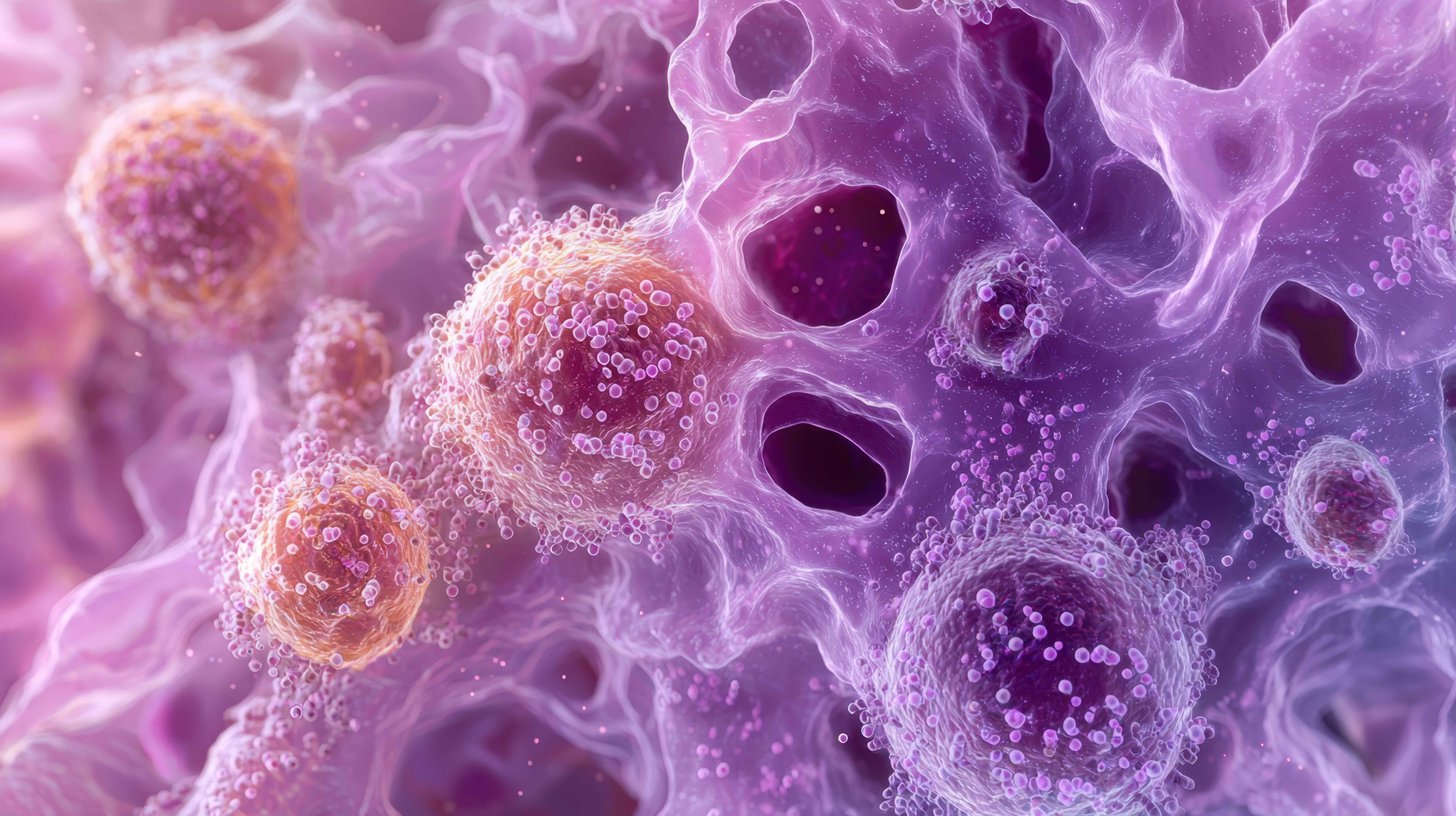News
Article
The Future of Immunotherapy in Breast Cancer Involves Engineered T-Cell Therapies, Better Prediction of Adverse Effects
Author(s):
As the use of sequencing, proteomics, and immunopeptidomics increases, more targets will also be discovered, as well as more biomarkers that predict responses to treatments.
With the body of research on immunotherapies in breast cancer growing quickly, the future of these treatments requires better prediction of immune-related adverse effects (irAEs), according to presenters at the 2023 San Antonio Breast Cancer Symposium (SABCS) in Texas. Additionally, it will likely involve engineered T-cell therapies.
Early-stage triple-negative breast cancer (TNBC) has the highest levels of immune infiltrate, so it makes sense that this indication was the first in breast cancer to receive approval for immunotherapy, said SABCS presenter Sherene Loi, MD, PhD. Tumor-infiltrating lymphocyte (TIL) infiltration comprises T cells with high expression of programmed cell death protein 1 (PD-1)/cytotoxic T-lymphocyte associated protein 4 (CTLA-4) in all breast cancer subtypes, and the quantity of immune infiltration is prognostic. In TNBC and human epidermal growth factor receptor 2 (HER2)-positive breast cancer, more infiltration signals a better prognosis. However, Loi pointed out that greater infiltration is adversely prognostic in hormone receptor (HR)-positive breast cancer.
Early-stage triple-negative breast cancer (TNBC) has the highest levels of immune infiltrate, so it makes sense that this indication was the first in breast cancer to receive approval for immunotherapy, said SABCS presenter Sherene Loi, MD, PhD. Image Credit: © Corona Borealis - stock.adobe.com

Phase 2/3 studies in early-stage neoadjuvant TNBC with immunotherapy have shown that patients with immune-rich tumors perform the best with immunotherapy, while those who are immune poor respond less favorably to therapy. However, Loi said immune enrichment does not seem to influence the magnitude of benefit from the addition of a programmed death cell ligand 1 (PD-L1) inhibitor.
In early-stage HR-positive disease, studies with pembrolizumab (Keytruda; Merck) and nivolumab (Opdivo; Bristol Myers Squibb) saw similar, consistent results. Specifically, the KEYNOTE-756 and CA209-7FL studies saw slight increases in pathological complete response (pCR) rates in the intent-to-treat (ITT) populations.
In the PD-L1-positive population, researchers see a larger magnitude of benefit with the addition of immunotherapy agents. Loi noted that there is a subset of highly proliferative HR-positive breast cancers that are immunogenic (approximately 15% of total breast cancers), and these seem to derive a lot of benefit from immunotherapies with regard to pCR rates.
One key challenge with immunotherapy is the prediction and management of irAEs, said presenter Toni K. Choueiri, MD, with Dana-Farber Cancer Institute. Choueiri presented a long list of potential irAEs, highlighting the fact that they can occur in any organ. “The bottom line here is that these are not mutually exclusive, meaning any AE in any organ can happen,” Choueiri said.
However, Choueiri said in some cases, irAEs have been associated with immune checkpoint inhibitor benefit. “In my practice, if I have a severe immune-related AE and the patient was benefitting, I really stop the drug and I continue observing, and many of these patients do not recur,” Choueiri said. “So, it’s not all bad.”
Importantly, however, Choueiri said there is currently no biomarker used in clinical practice to predict irAEs. At Dana-Farber, Choueiri and his colleagues performed a genome-wide association study with 2678 patients treated with immune checkpoint inhibitors across all tumors, and manually curated the irAEs before imputing single nucleotide polymorphisms (SNPs) using tumor sequencing. The team found 3 SNPs associated with irAEs and validated these findings in 4 other cohorts.
The future of this research will involve combining biomarkers in a predictive model and potentially using artificial intelligence. Rather than looking one dimensionally, Choueiri said integrating all data into a single model could be incredibly impactful, although it requires widespread collaboration.
Additionally, other research in immunotherapies is examining the use of engineered T-cell receptor (E-TCR) therapies that recognize and attack tumor cells. Whereas chimeric antigen receptor (CAR) T-cells have antigens limited to surface molecules and require higher antigen density, E-TCRs have antigens that can come from any cellular compartment and detect even low levels of antigen expression. However, presenter Valentina H. Velez, MD, acknowledged that E-TCRs are human leukocyte antigen (HLA)-dependent and restricted, and E-TCRs require other CD3 components.
Nearly 50 studies have examined E-TCRs thus far, targeting a variety of antigens (NY-ESO-1, MAGE-A3, KK-LC-1, MAGE-A1, TP53 R175H, and unspecified neoantigens). All of these are either phase 1 or 2, and unfortunately 86% have yet to report any results. Additionally, the available results are mixed. For instance, data from one trial targeting MAGE-A3 included 2 patients with breast cancer, neither of whom responded to the therapy. Another study targeting p53 R175H, however, included 1 patient with breast cancer who saw a 55% decrease in tumor burden. This patient progressed 6 months post-treatment due to loss of HLA expression.
Overcoming the breast cancer tumor microenvironment is a key obstacle for E-TCR research, Velez said. Some potential strategies include expressing IL-18 and CDCR2 to improve infiltration; enhancing antitumor activity of HER2 CAR T-cells through TR2BB co-expression and cytokine signal 3 incorporation; and utilizing CRISPR/Cas9-mediated A2AR deletion. This final tactic has been shown to enhance HER2 CAR T-cell efficacy in breast cancer immunocompetent mouse models, according to investigators.
Moving forward, Velez said she predicts cell therapies will be incorporated earlier in the disease course, where their chances of success are much higher. As the use of sequencing, proteomics, and immunopeptidomics increases, more targets will also be discovered, as well as more biomarkers that predict responses to treatments. Velez also added that off-the-shelf cell therapies could be possible in the future.
Reference
Loi S, Choueiri TK, Velez VH. Immunotherapy: Purpose, Resistance, and Toxicity. Presented at: San Antonio Breast Cancer Symposium. December 5-9, 2023.
Newsletter
Stay informed on drug updates, treatment guidelines, and pharmacy practice trends—subscribe to Pharmacy Times for weekly clinical insights.






